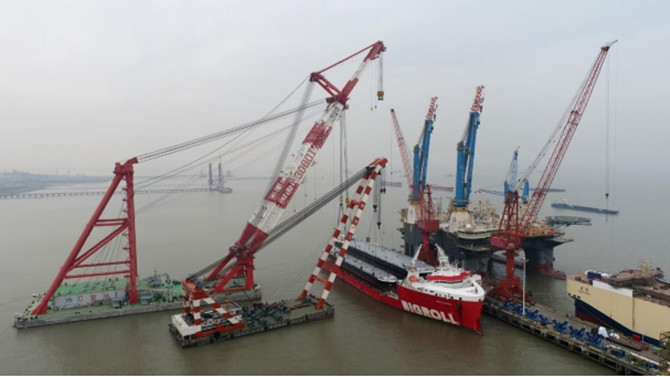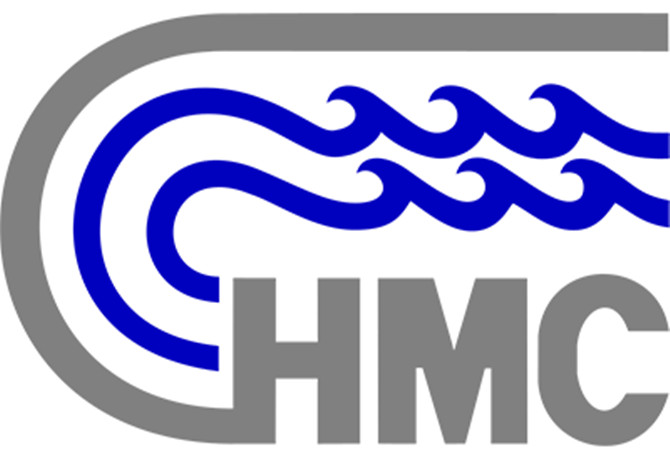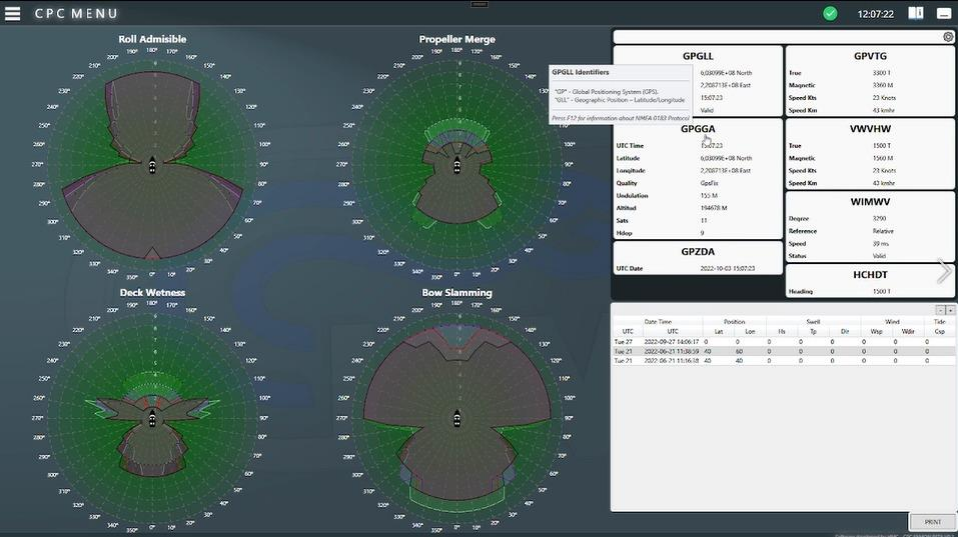SAFEPLAN Polar Diagram tool interface connected with the weather forecast for seakeeping limitations and advice at sea based on ship behavior.
In this project, a digitized decision support system for ships is being developed. This system consists of an innovative prediction model and prototypes of the required hardware and software. This innovation makes it possible to provide early and location-specific safety advice to sailing ships, which greatly increases the safety and efficiency of the maritime sector.
Extreme ship movements cause loss of cargo, property damage, and in the worst-case capsize ships. Ships lose thousands of containers every year and recently from the MSC ZOE 342 containers ended up in the Wadden Sea. Such accidents lead to high costs and serious environmental pollution. Predicting - utilizing artificial intelligence - and responding to extreme ship movements can solve this global problem.
However, this development is complicated by the many factors that determine ship behavior. These are both static factors, such as the design of the ship and the loading condition, as well as dynamic factors: local waves, currents, navigation route, and sailing speed. These factors are difficult to predict individually, and a great deal of knowledge is still lacking about the mutual relationship.
HMC will determine the most important parameters for ship behavior and link them to local weather data in a forecasting model. The model is unique in that it is refined during the voyage with real-time motion measurements from the ship. This provides very high reliability of forecasts, based on which advice is issued to guarantee and optimize safe ship behavior. These could be adjustments to the shipping route, the sailing speed, or the ballast water.
The model also offers opportunities for energy-efficient sailing - and therefore CO2 reduction - and speed reduction. To use the prediction model as a decision support system, the necessary hardware and software are also developed in the project. The hardware includes a new type of motion box, that measures real-time ship movements and sends them ashore.
By developing the forecasting model and operating system simultaneously, the decision support system can be offered to the maritime sector in the short term. There is a high demand from the sector, and this will only increase in the future because climate change increases the chance of extreme weather and extreme ship behavior.
Project Highlights
· Decision Support System for Automated Maritime Navigation.
· Real-time voyage weather monitoring.
· Loading conditions of the ship are taken into account.
· Safety of voyage, Prevention from Accidents, Environmental focus, Time & Cost saving.
· Evaluation of the safety of the voyage with respect to the actual weather conditions of the voyage route and the loading conditions of the vessel.
· The main goal is to restore the balance between safety and economy.
Extreme ship movements lead to cargo loss, material damage, and, in the worst case, capsize. Predicting and responding to extreme ship movements can solve this global problem.
Among others below, transport engineered and led by HMC BV.

The opinions expressed herein are the author's and not necessarily those of The Xinde Marine News.
Please Contact Us at:
media@xindemarine.com




 Ningbo Containerized Freight Index Weekly Commentar
Ningbo Containerized Freight Index Weekly Commentar  Ningbo Containerized Freight Index Weekly Commentar
Ningbo Containerized Freight Index Weekly Commentar  Ningbo Containerized Freight Index Weekly Commentar
Ningbo Containerized Freight Index Weekly Commentar  BIMCO Shipping Number of the Week: Bulker newbuildi
BIMCO Shipping Number of the Week: Bulker newbuildi  Ningbo Containerized Freight Index Weekly Commentar
Ningbo Containerized Freight Index Weekly Commentar  Ningbo Containerized Freight Index Weekly Commentar
Ningbo Containerized Freight Index Weekly Commentar